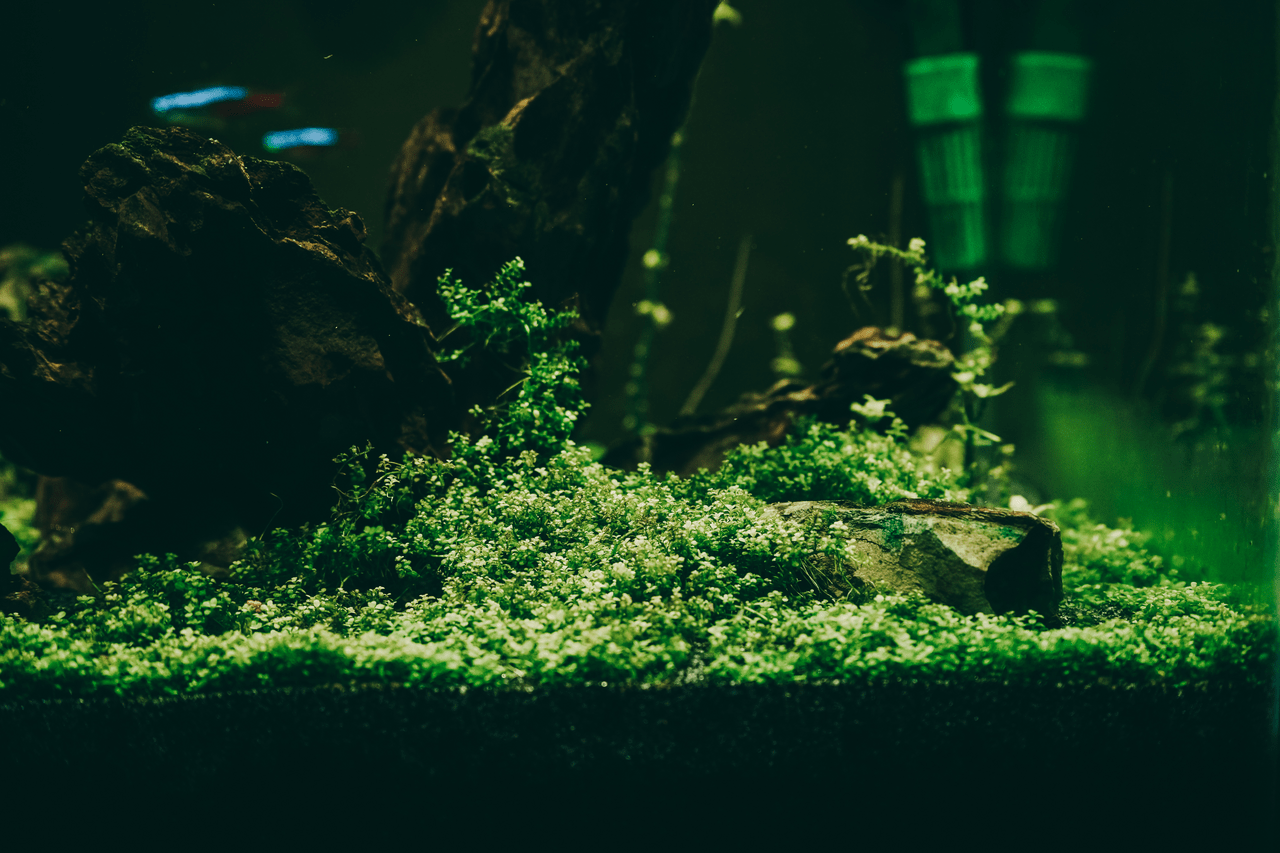Algae, the uninvited guest of aquarists worldwide, is an all-too-common challenge encountered in both freshwater and marine aquariums. While small amounts of algae can be a natural and beneficial part of the aquarium ecosystem, uncontrolled growth can lead to unsightly green or brown aquarium surfaces, inhibit plant growth, and compromise the health of your aquatic inhabitants.
Our indispensable guide on aquarium algae control will explore the various types of algae, discuss effective preventive measures, and present proven solutions for managing and eliminating algae in your aquarium. With the support of Perfect Aquatics' unparalleled passion, expertise, and commitment, you will confidently navigate the ups and downs of algae control, maintaining a balanced and thriving aquatic environment that enriches the lives of your fish, plants, and invertebrates.
Let us embark on a transformative odyssey into the fascinating realm of algae, embracing our power to create a pristine, verdant underwater sanctuary alive with colour, vitality, and the miraculous interplay of aquatic life.
Identifying Common Types of Aquarium Algae
Recognising the key types of algae that may thrive in your aquarium is the first step towards effective control:
- Green Algae: Green Algae, including hair and thread algae, appears as fuzzy green strands or patches on surfaces and plants. Although unsightly, green algae typically indicate a healthy aquarium environment, as these species thrive in well-lit and oxygenated conditions.
- Brown Algae: Brown Algae, or diatoms, are usually the first algae type to appear in a new aquarium. Characterised by a brown, slimy film, they thrive in low-light conditions and are often indicative of high silicate and nutrient levels.
- Blue-Green Algae: Blue-Green Algae, or Cyanobacteria, is not a true algae but a photosynthetic bacteria. Appearing as slimy blue-green sheets, the presence of Cyanobacteria signifies excessive nutrients, particularly organic waste, and inadequate water circulation.
- Black Beard Algae: Black Beard Algae, also known as brush algae, exhibits as dark, wiry tufts on aquarium surfaces. High carbon dioxide levels or unstable water parameters often contribute to the growth of this stubborn species, which requires diligent management.
Preventing Algae Growth: The Key to a Balanced Aquarium
Implementing prevention strategies helps maintain a balanced aquarium and averts the undesirable consequences of unchecked algae growth:
- Nutrient Control and Regular Maintenance: Conduct weekly water changes to reduce excess nutrients, which can fuel algae growth. Maintain a stable and consistent nitrogen cycle, ensure adequately functioning filters, and remove uneaten food, debris, and decaying matter.
- Lighting Management: Implement a consistent lighting schedule, with 8-10 hours of illumination per day, using a timer to ensure stability. Avoid excessive light, which invites algae growth, and utilise appropriate light fixtures tailored to your tank's size and inhabitants.
- Balanced Aquarium Plants: A well-planned aquascape with planted vegetation can suppress algae growth by consuming excess nutrients. Select a variety of fast-growing and slow-growing plants to create a balanced ecosystem.
- Chemical Filtration and Algae Inhibitors: Employ chemical filtration media, such as activated carbon or phosphate removers, and consider using algae inhibitors or water conditioners when necessary to further suppress algae growth.
Effective Solutions for Algae Control and Eradication
If algae growth persists despite preventive measures, employ these proven control and eradication strategies:
- Manual Removal: Sculpt an immediate impact on algae growth by manually removing any visible algae clumps, scrubbing aquarium surfaces, and siphoning out algae-infested water during regular water changes.
- Algae-Eating Inhabitants: Introduce algae-eating fish, shrimp, and snails, such as Otocinclus Catfish, Amano Shrimp, and Nerite Snails, to assist in algae control. Research compatible species that suit your aquarium size and its current inhabitants.
- Chemical Treatments: For persistent or challenging algae outbreaks, consider cautious application of chemical treatments, such as spot-dosing hydrogen peroxide. Utilise these treatments judiciously, as they may also impact beneficial microorganisms and other aquarium life.
- Adjusting Feeding Practices: Overfeeding can contribute to an excess of nutrients in the aquarium, which promotes algae growth. Assess your feeding schedule and portions to ensure you are providing adequate nutrition without creating wastage.
Conclusion
By understanding the nature and types of algae, implementing effective preventive measures, and mastering algae control strategies, you become a formidable steward of your aquarium's delicate and intricate ecosystem. With the invaluable knowledge, tools, and experience of the Perfect Aquatics team as your guiding light, transform your aquarium into a vibrant, crystal-clear underwater haven, a flourishing and scintillating world of colour, activity, and aquatic harmony undimmed by the shadow of invasive algae growth.
Seize control over aquarium algae and cultivate a stunning, verdant underwater paradise with the expert guidance, innovative strategies, and unwavering support from the best aquatic store in Henlow—Perfect Aquatics, your trusted partner in achieving algae-free dominion over your aquarium's thriving aquatic realm!

